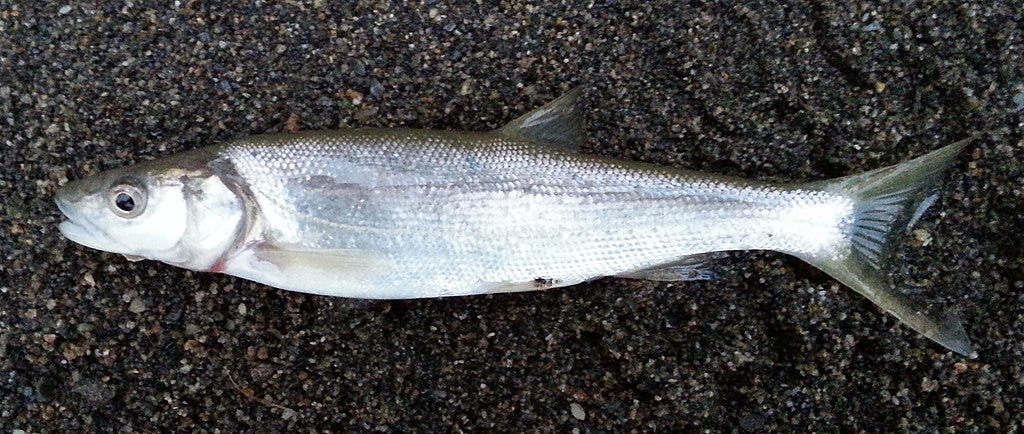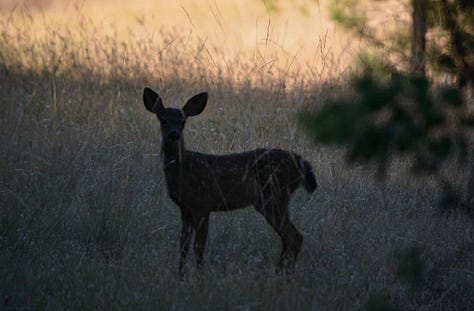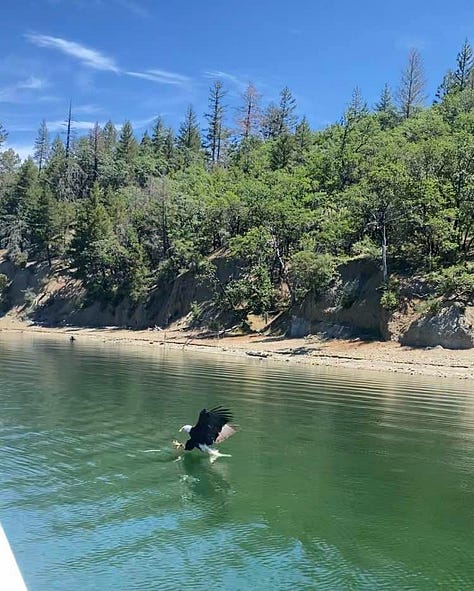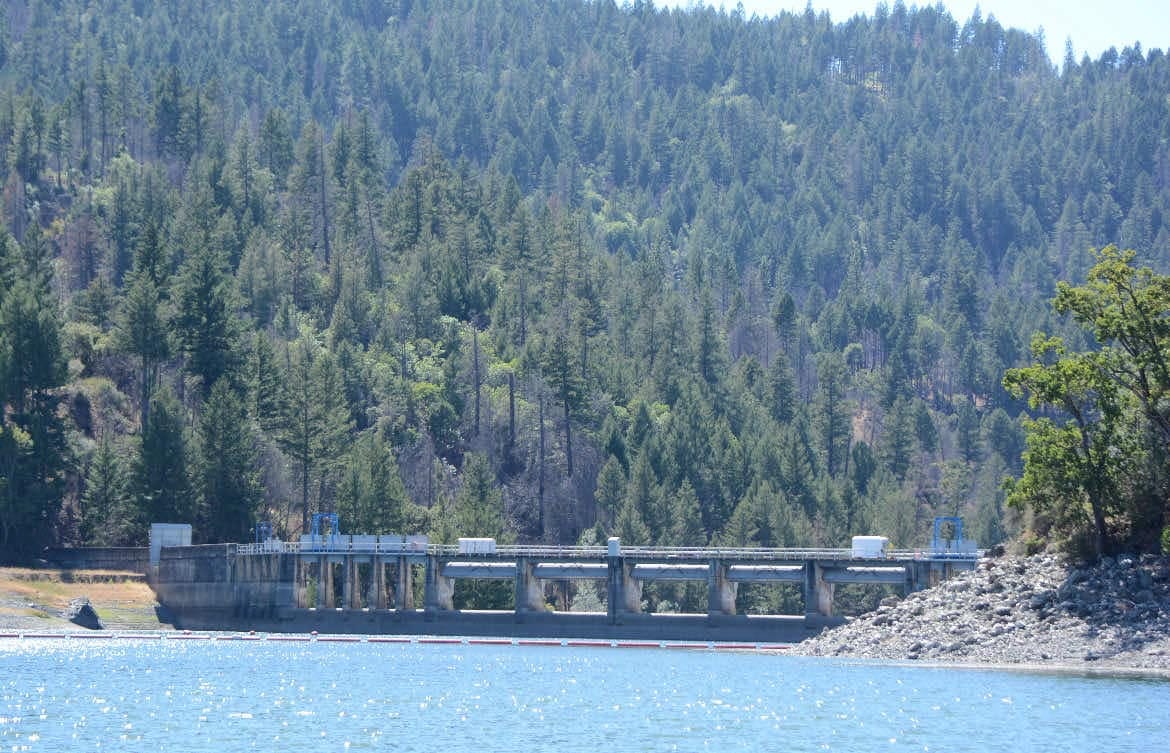Destroying the Potter Valley Project Won't Save the Salmon: 8 Truths About What Happened to the Eel River
What really happened to the salmon? A local expert speaks up.
The claim that the Potter Valley Project is the reason for the downfall of salmon and steelhead fisheries in the Eel River is far short of the WHOLE STORY.
One dam located at the very tip top end of the Eel River watershed without a fish ladder is not alone to blame.
As Paul Harvey might have said, here is the rest of the story.
1. Commercial fishing industry
In the late 1800s through the early 1900s, the commercial fishing industry operated off the coast of California and supplied millions of pounds of salmon to huge canneries constructed in Humboldt County. They fished out the estuary even into the Eel River. They fished until there wasn’t a fish left to catch and the canneries had to close.
Behind them came the sport fishermen. The Eel was well known for its salmon and steelhead and they came by the thousands to fish this river, some with fishing poles and some with gillnets.
2. Logging
The early 1900s, logging practices were deplorable and today considered environmentally irresponsible. The timber slash left in the creek drainages was immense. The entire North Coast timber region was opened for harvest by the construction of thousands of miles of roads with only rudimentary environmental engineering efforts being made. Stream crossings were built in such a manner they blocked fish migration to spawning from one end of the Eel to the other.
Logging practices have long since improved. We need to concentrate on repairs now to reopen access to those spawning streams. Our money would be better spent on these repairs than on removing Scott Dam.
3. Extreme weather events (1955 and 1964)
In December of 1964, a snowpack in the Pillsbury region similar to the snowpack of 2023 was followed by a real atmospheric river (a “pineapple express”). It brought rain to 7000-foot elevation, melting all the snow.
In a matter of a few days, the deluge flooded every stream in the Eel River drainage clear to Fernbridge in Humboldt County. Whole mountain sides were lost and the amount of silt and debris left in the otherwise pristine spawning streams was enormous.
I know this to be true because I lived at Lake Pillsbury at the time. It happened. I saw it happen, and I believe the spawning grounds are still repairing themselves today in an effort to become the pristine streams they once were.
4. Government egg harvesting (stealing) station at Van Arsdale Dam
In the 1960s, the fish ladder at Cape Horn Dam was operated as a salmon and steelhead milking station by a federal agency known at that time as the Department of Fish and Game.
To the detriment of the Eel River, millions of eggs were taken and shipped to hatcheries all over the country, and yes, out of the country, to places like New Zealand!
This practice had a devastating impact on fisheries in the Eel River. There were few fish left to spawn when they finally stopped the practice of robbing the river, one more time.
5. Cash cow for environmental NGOs
The Eel River has been used by numerous non-governmental organizations to generate an enormous amount of funds under the guise of “saving the salmon.”
They seem to be very adept at procuring grant funding as well. I believe this money is also used to fund other projects they have going on throughout the state.
We all support healthy and thriving fisheries, but we don’t use half-truths to con people into sending us money to do it.
Keep in mind, these organizational operatives, including their attorneys, are well paid for their services.
6. Pikeminnow
PG&E didn’t put the pikeminnow—a salmon predator—into Lake Pillsbury or the Eel River. The Department of Fish & Game claimed that it was fishermen who did this, sometime during the 1980s.
I don’t believe either of these groups had anything to do with it.
I have it from old sources that Fish & Game actually planted pikeminnow as a sport fish in yet another short-sighted effort to improve fishing in Lake Pillsbury.
The California Department of Fish & Wildlife should step up and take care of this problem. They are currently working to control numerous invasive species in other places in the State, why not Lake Pillsbury and the Eel River?

7. Seals/sea otters
The California and U.S. Fish & Wildlife Service is actually going to establish another colony of seals or sea otter off the North Coast of California. This single protected species has created a huge negative impact on salmon and steelhead recovery in many rivers, including the Eel River.
Don’t they realize how many salmon and steelhead these cute creatures can eat in a single day? And they really only go for the roe—two or three bites and they move on to another.
8. Cannabis cultivation, legal and illegal
Not only has this crop created a burden on the Eel River’s scarce summer water supply, it has wreaked havoc on the environment in so many ways. The winter run-off from cannabis sites continues to poison and degrade water quality, fish habitat, wildlife, and our overall quality of life.
Removing the Potter Valley Project won’t save the salmon, but it will destroy vital water storage.
The construction of Scott Dam without a fish ladder blocked a minuscule portion of the thousands of miles of actual spawning habitat available in the Eel River drainage for salmon and steelhead. Surveys are now showing less than 50 miles, not hundreds as claimed.
Keep in mind that fish are still spawning in the hundreds of miles of tributaries up to and including Soda Creek, Welch Creek, and Panther Creek just below Scott Dam. Their historic numbers are not there either.
What if we spent the hundreds of millions of dollars it will take to destroy Lake Pillsbury storage and spent it instead on habitat restoration where fish can no longer access their spawning grounds downstream of the dam, such as the Middle Fork?
Save the Salmon and Serve the People: An Alternative Plan
The Eel River Diversion has been the subject of continuous biological study. The diversion amount, rate of flow, and timing, has always been managed to mimic natural flows with the goal of improving fisheries survival and habitat.
Prior to the 2004 biological opinion from the National Marine Fisheries Service, which currently dictates PG&Es Water Operations Plan, the diversion of water into the East Branch Russian River averaged 170,000 Acre feet per year.
Since 2008, the total annual diversion has been decreased by various over-reaching environmental groups and fisheries agencies to a mere 40,000 Acre Feet or less.
The previous 10-year average annual inflow into Lake Pillsbury has been 303,000 acre feet.
As of June 2023, the annual flow over Scott Dam was over 600,000 acre feet.
The small percentage of total water generated in the upper Eel River being diverted into the East Branch Russian River is not depriving fisheries survivability or reproduction. In fact, water stored in Lake Pillsbury is being used every day of the year to supplement normally low or dry flows throughout the summer and fall seasons for the migrations of salmon and steelhead.






Removing Scott Dam & Losing Lake Pillsbury Benefits No One
It seems Scott Dam is the largest stumbling block left to address (or not). It benefits no one to remove it and lose the 77,000 acre-feet of water storage it provides. Lake Pillsbury provides a multitude of beneficial uses within four counties serving diverse wildlife and more than 700,000 citizens. Management of this precious renewable resource is vital to California.
So, let’s find a way around the dam, or over it, or under it. We possess the technology required to complete the task. All we need is the determination, dollars, and yes, our state and federal elected officials support to press forward with the solution to keep Scott Dam in place.
Cape Horn Dam has a fish ladder but it has always been difficult to maintain. The design is unable to manage the high gravel load of the Eel River at flow rates above 7000 cubic feet per second. It could be, it has been, redesigned to accommodate a volitional fish passage system with a state-of-the-art screened diversion. This will be done to protect fisheries without discontinuing the diversion completely. This could have been accomplished years ago.
Steven Elliott recently retired as Superintendent of the Potter Valley Irrigation District, where he served since 1989. He owns Elliott’s Christmas Trees. He is a captain of the Potter Valley Volunteer Fire Department where he has been a member for 33 years, an Army veteran who served in Vietnam, husband to Kay, and a father and grandfather.








Really good piece...It amazes me how folks in the name of good can really screw things up
Very truthfully article. It's a false narrative that getting rid of water storage will save the river...it won't...it will devastate it...and devastate the Russian river for sure. Especially if we get a few years of drought again, which we will. It's very strange & disturbing PG&E isn't using profits to upgrade their unique and hydropower project?? And keep charging customers more. How do they get away with that type of walk away? Like the disastrous mine companys. Just leave their neglect for others to deal with.